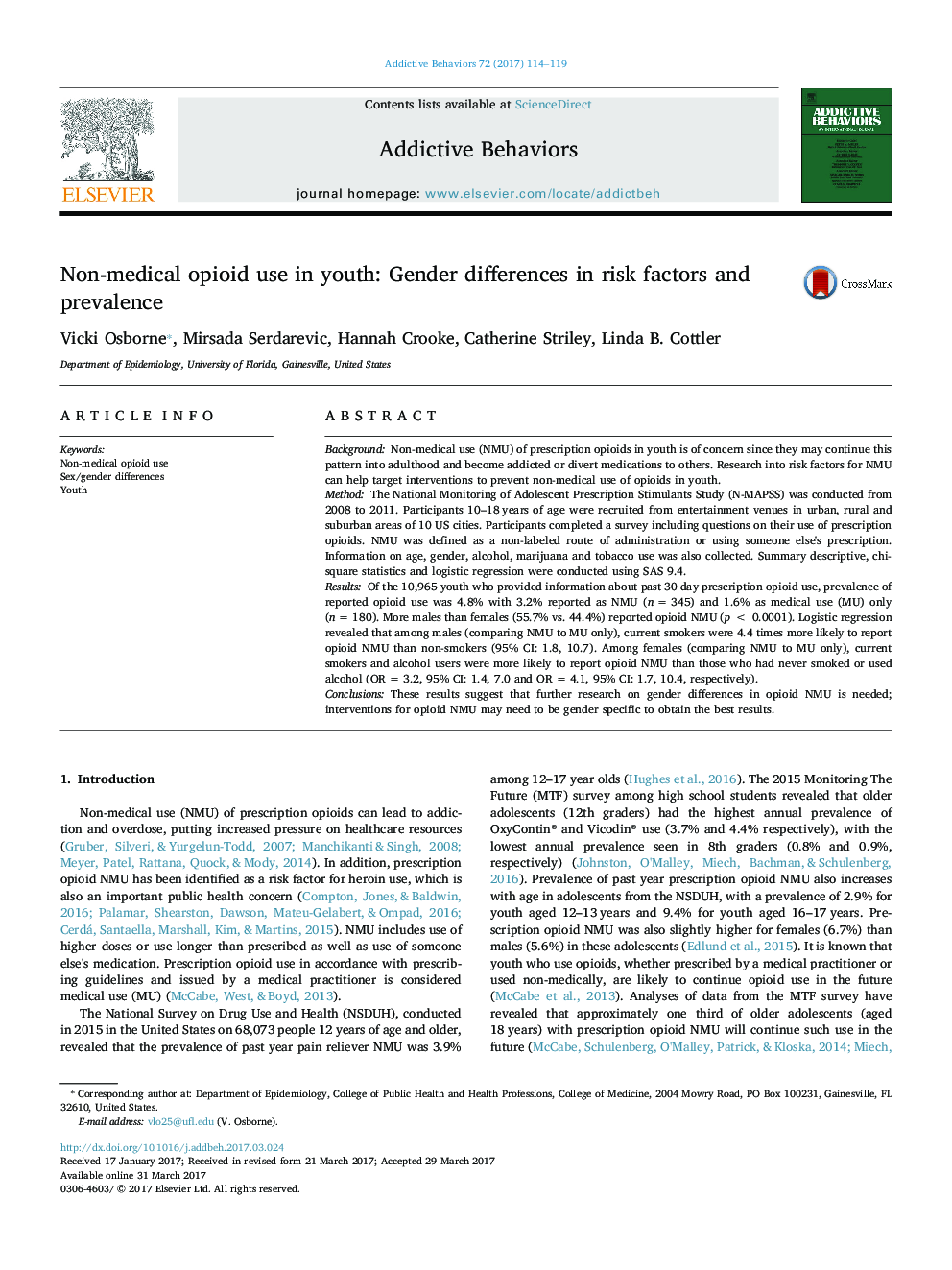| کد مقاله | کد نشریه | سال انتشار | مقاله انگلیسی | نسخه تمام متن |
|---|---|---|---|---|
| 5037771 | 1472499 | 2017 | 6 صفحه PDF | دانلود رایگان |
- Youth 10-18Â years were more likely to report opioid NMU if they were male compared to females.
- Youth were more likely to report opioid NMU if they reported past 30 day marijuana and alcohol use, compared to never use.
- Among opioid users, males were more likely to report opioid NMU if they were current smokers.
- Among opioid users, females were more likely to report opioid NMU if they were current smokers or ever alcohol users.
BackgroundNon-medical use (NMU) of prescription opioids in youth is of concern since they may continue this pattern into adulthood and become addicted or divert medications to others. Research into risk factors for NMU can help target interventions to prevent non-medical use of opioids in youth.MethodThe National Monitoring of Adolescent Prescription Stimulants Study (N-MAPSS) was conducted from 2008 to 2011. Participants 10-18 years of age were recruited from entertainment venues in urban, rural and suburban areas of 10 US cities. Participants completed a survey including questions on their use of prescription opioids. NMU was defined as a non-labeled route of administration or using someone else's prescription. Information on age, gender, alcohol, marijuana and tobacco use was also collected. Summary descriptive, chi-square statistics and logistic regression were conducted using SAS 9.4.ResultsOf the 10,965 youth who provided information about past 30 day prescription opioid use, prevalence of reported opioid use was 4.8% with 3.2% reported as NMU (n = 345) and 1.6% as medical use (MU) only (n = 180). More males than females (55.7% vs. 44.4%) reported opioid NMU (p < 0.0001). Logistic regression revealed that among males (comparing NMU to MU only), current smokers were 4.4 times more likely to report opioid NMU than non-smokers (95% CI: 1.8, 10.7). Among females (comparing NMU to MU only), current smokers and alcohol users were more likely to report opioid NMU than those who had never smoked or used alcohol (OR = 3.2, 95% CI: 1.4, 7.0 and OR = 4.1, 95% CI: 1.7, 10.4, respectively).ConclusionsThese results suggest that further research on gender differences in opioid NMU is needed; interventions for opioid NMU may need to be gender specific to obtain the best results.
Journal: Addictive Behaviors - Volume 72, September 2017, Pages 114-119
